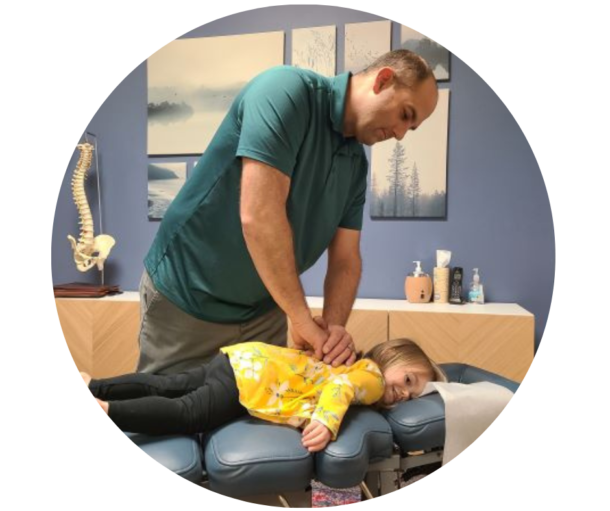HEADACHES:
Most people have experienced headaches sometime in their life, but when they become frequent and interfere with your life, this becomes a real problem. Often times people turn toward over the counter medications, such as, Tylenol, Ibuprofen, Advil, and others. These are temporary solutions to headaches that can help, but do not address the underlying problems that are causing the headaches. The feeling of headaches can include pressure in the back of the neck (at the base of the skull), pressure around the temples, pain in the front of the head, shooting nerve pain that wraps around the face, grabbing throbbing type pain, a tight band feeling in the neck, and other symptoms.
Headaches are more common in people ages 20-40 years old, but can affect anyone. Headaches can be caused after trauma (car accidents, slips and falls, etc.), predisposing genetic factors, excessive stress (school-related during examinations, family disputes, work/job stresses, etc.), neurological (migraines, cluster headaches, etc.), or pathological (tumors). There are several different types of headaches, but the more common headaches include tension headaches, migraines, cluster headaches, sinus headaches, trauma-related headaches, exertional headaches, and menstrual headaches.
Statistics:
- A study done in 2015 showed that 20% of females and 9.7% of men 18 or older had a severe headache or migraine within the last 3 months
- For both men and women, ages 75 and older reported that the majority of their symptoms significantly decreased with age (8)
- Tension-type headaches are the most common form of headaches with adults
- Tension-type headaches may last from 30 min up to several days
- Tension-type headaches affect approximately 50% of the US population
- Women are two times as likely as men to suffer from tension-type headaches
- Many people with chronic tension-type headaches have had the headache for 60-90 days (9)
- Migraines affect 39 million men, women and children in the U.S. and 1 billion of the people in the world
- Migraine headaches are the third most prevalent illness in the world
- Approximately 1 out of 4 households in the U.S. has 1 person with a migraine
- In the U.S., 18% of women, 6% of men, and 10% of children experience migraines
- The most common age for migraines are 18-44 yrs old
- Approximately 90% of migraine suffers have a family history of migraine
- Approximately 25% of sufferers of migraines have visual disturbances referred to as “aura” (10)
Tension Headaches:
Tension headaches are one of the most common types of headaches, affecting the majority of people at some point in their life. These headaches can last minutes to weeks. This headache is characterized by pressing or tightening pain that occurs in the front or back of the head. The pain can be mild to moderate intensity, and is not intensified by physical activity (1). Symptoms can be brought on by not getting enough sleep, poor posture, emotional stress, or mental stress. The most common types of stress associated with tension headaches include family, social relationships, friends, school, and work (9).
Migraines:
Migraines are the most common neurological cause of disability in the world (2). Commonly treated with NSAIDs. Migraines can occur with an aura (sensory disturbances, such as, disturbances in vision), or without an aura. Migraine attacks are commonly found with one or more of the following symptoms: visual disturbances, nausea, vomiting, dizziness, extreme sensitivity to sound, light, touch and smell, and tingling/numbness in the face or extremities. Medication overuse is one of the most common reasons why people that have occasional migraines turn into chronic migraine (10).
Cluster Headaches:
Involves at least one symptom in the eye, nose, or face (only on one side). This headache occurs around the temple or eye with severe pain (3). The cause of these headaches are not well understood; however, theories suggest blood vessel involvement. Common triggers include smoking, alcohol, and other life style behaviors.
Sinus Headaches:
Loss of smell is the most specific indicators for sinus headaches, the other three common symptoms are facial pain/pressure, nasal congestion, and nasal drainage (4). Sinus headaches are caused by a swelling around the sinuses due to an infection or allergen (7). Migraines and other types of headaches are often times mistaken for sinus headaches. Nasal symptoms frequently accompany migraine (5).
Trauma Related Headaches:
Headaches related to trauma can be serious because the blood vessels can be damaged. Headaches after trauma, in which a person loses consciousness, should be evaluated for risk of stroke. The most common symptoms of trauma related headaches are moderate to severe intensity, pulsating, nausea/vomiting, light/sound sensitivity, or worsened with routine activity (6).
Exertional Headaches:
Exertional headaches occur due to strenuous exercise, and can be triggered by the following: running, jumping, weight lifting, sexual intercourse, bouts of coughing or sneezing. These headaches typically do not last long (up to 2 days). The pain is felt as a throbbing sensation. Warm up exercises can help to prevent these types of headaches (7).
Menstrual Headaches:
Changes in estrogen levels can trigger headaches, and develop in the days just before or during a women’s cycle. The symptoms can mimic a traditional migraine and can occur during ovulation. Headaches related in changes with hormones can also be triggered by oral contraceptives, menopause or pregnancy (7).
When should you be really worried about your headache?
- Headaches that a brought on very quickly and are very painful
- Many headaches with children
- Headaches that are brought on with trauma to the head
- Headaches with symptoms of confusion or disturbed vision, speech, or balance
- Headaches from a fever, seizures or unconsciousness
- Headaches with persistence vomiting (7)
Exercises you can try at home or the gym:
Strengthening your upper back, stretching out the chest muscles, and strengthening all 4 sides of the neck, can help with headaches. When the muscles of the upper back and neck get tight and pull on the neck, this can trigger headache symptoms. If you sit at a desk for several hours try an exercise called “Bruggers” exercise, which can take stress off your neck/upper back (sit up straight, roll shoulder back, tuck in chin and bring arms to your side with palms out).
a.) Bent over rows or Low/High rows with resistant bands
b.) Lat pull downs
c.) Shoulder blade squeeze
d.) Stretches for the front of the chest muscles
e.) Head lifts for the neck in 4 positions (back, both sides and stomach down) to strengthen muscles around the neck
f.) Pull on side of your head toward your shoulder
g.) While looking down and to your right, pull on back of your head
Chiropractic and other natural treatments for headaches:
Chiropractic treatment can help to loosen the joints and muscles of the neck and upper back. This will help to lessen the stress placed on the body and can help with symptoms of headaches. Chiropractic helps with movement, and when headache symptoms occur, the joints and muscles tighten in the neck and upper back. Most chiropractors have other therapies that can also help with the tight muscles and inflammation (which is one of the primary trigger of pain and other symptoms).
Massage therapy works very well with chiropractic by reducing muscle tension and improving circulation in the area that is worked on. By loosening the muscles of the neck, this will improve circulation resulting in a decrease in inflammation. Massotherapist can work on trigger points (tight areas of the body, which can refer pain) to help decrease pain.
Acupuncture and dry needling are two similar methods using very thin needles to insert into muscles and around nerves. These techniques can help with tight muscles and to calm down sensitive nerves. This can be an effective form of pain management, and unlike needles with medications, acupuncture needles are a solid piece of metal that feels more like pressure than an actual needle.
There are common foods that can trigger migraines, so a good plan of action is keeping a food diary to find which foods (or drinks) trigger your headaches. Some examples of foods/drinks that can trigger headaches are the following: Aged cheese, alcohol, nuts/seeds, tomato based products, potato chips, organ meats, smoked fish, pickled foods, foods that contain yeast, beans, onions, garlic, certain fresh or dried fruits, foods with MSG, yogurt, chocolate, caffeinated drinks, nitrate containing meats (hot dogs), and aspartame (12).
There are certain supplements that can help reduce the symptoms (or sometimes prevent)
headaches from occurring. Vitamin B-2 (riboflavin), Magnesium (Magnesium citrate or sulfate), Vitamin D, Coenzyme Q10, and Melatonin are examples of supplements that have been shown to reduce headaches. Some foods naturally contain these supplements, such as, pumpkin seeds, dark chocolate, and others.
Your curve of your neck can affect your headaches:
A healthy human spine has three types of specific curves that function as shock absorbers, provide balance, and provide support for the body. The neck curve (referred to as lordosis), is a forward curve of the neck that protects the neck. A neurosurgeon demonstrated in a study, that a decreased curve in the neck can stretch the spinal cord and brain stem as much as 1.68 inches and even can affect the low back (11).
There are chiropractic tools that are used to evaluate these spinal curvatures, and tools used to correct these increased or decreased curves of the body. Stretches and strengthening exercises help to support corrective chiropractic tools to help reshape the spine and reduce symptoms.
References:
1) Waldie KE, Buckley J, Bull PN, et al. Tension-Type Headache: A Life-Course Review. Headache Pain Manag. Case Rep. 2015, 1:1.
2) Global Burden of Disease Study 2013 Collaborators Global, regional, and national incidence, prevalence, and years lived with disability for 301 acute and chronic diseases and injuries in 188 countries, 1990–2013: a systematic analysis for the Global Burden of Disease Study 2013. Lancet (Lond, Engl) 2015;386:743–800. doi: 10.1016/S0140-6736(15)60692-4.
3) Headache Classification Subcommittee of the International Headache Society. The international classification of headache disorders: 2nd edition. Cephalalgia. 2004;24(suppl 1):9–160.
4) Lal, D., Rounds, A., and Dodick, D.W. Comprehensive management of patients presenting to the otolaryngologist for sinus pressure, pain, or headache. Laryngoscope. 2015; 125: 303–310
5) Sinus headache or migraine? Roger K. Cady, Curtis P. Schreiber
Neurology May 2002, 58 (9 suppl 6) S10-S14; DOI: 10.1212/WNL.58.9_suppl_6.S10
6) American Migraine Foundation. May 27, 2016.
https://americanmigrainefoundation.org/resource-library/post-traumatic-headache/
7) What different types of headaches are there? Gill, S. Jan. 29, 2018. https://www.medicalnewstoday.com/articles/320767.php
8) QuickStats: Percentage of Adults Aged ≥18 Years Who Reported Having a Severe Headache or Migraine in the Past 3 Months, by Sex and Age Group — National Health Interview Survey, United States, 2015. MMWR Morb Mortal Wkly Rep 2017;66:654. DOI:
9) Tension-Type Headaches. July18, 2014. Cleveland Clinic. https://my.clevelandclinic.org/health/diseases/8257-tension-type-headaches
10) Migraine is an extraordinarily prevalent neurological disease, affecting 39 million men, women, and children in the U.S. and 1 billion worldwide. Migraine Research Foundation. https://migraineresearchfoundation.org/about-migraine/migraine-facts/
11) Corrective Chiropractic: Why is A Proper Neck Curve Important to your Health? Chiropractic BioPhysics. March 30, 2013. https://idealspine.com/corrective-chiropractic-why-is-a-proper-neck-curve-important-to-your-health/
12) Headaches and Food. Cleveland Clinic. July 3, 2019. https://my.clevelandclinic.org/health/articles/9648-headaches-and-food



Thank you for mentioning how chiropractic treatment can help make your muscles relaxed while reducing the strain on your body. Ever since my wife started working from home, she has mentioned that she experiences painful migraines whenever she finishes working. I wonder if her migraines are being caused by how she positions her neck while at work.